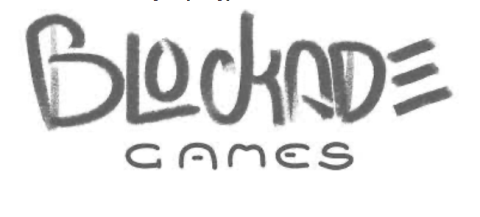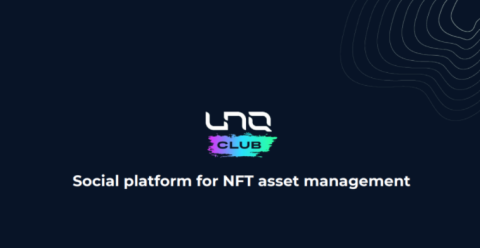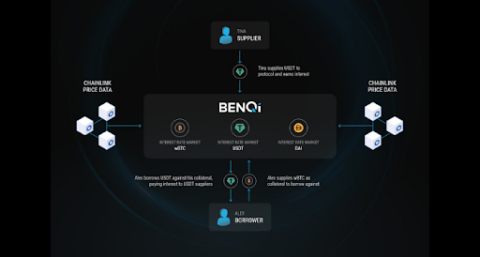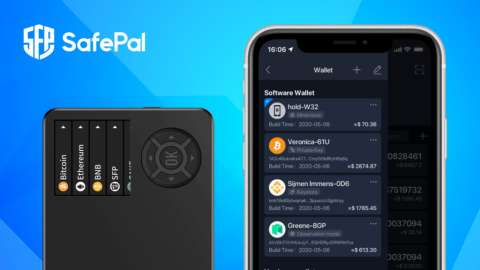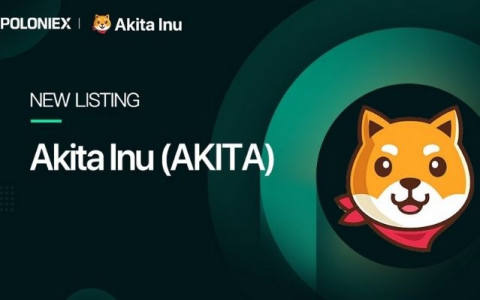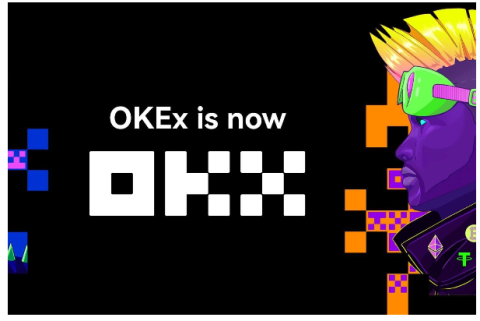What is thena? Discover the outstanding features of Thena and THE . token

Ngoài PancakeSwap, hệ sinh thái BNB Chain còn có một AMM khác có TVL đạt 150 triệu USD chỉ sau hai tháng ra mắt, dự án này được gọi là Thena.

Polkawallet Wallet offers multi-chain asset management, convenient staking, governance and many other DeFi services on a single mobile app. Similar to other wallet applications, the private key clusters will be managed by the users themselves without the intervention, monitoring or storage of any other parties.
Polkawallet wallet supports platforms and ecosystems such as Polkadot, Kusama, Acala, Karura, Statemine, Bifrost, ChainX, Edgeware, and Substrate. The Polkawallet application is available on all current mobile operating systems, iOS and Android. Users can download the app's APK file to install on other Android-powered operating systems and devices such as Windows 11, HarmonyOS, and Linux versions.
Polkawallet makes it easier for validators and nominees to contribute, by making the graphs more intuitive and featuring a detailed history of each validator, for better analysis and research.
Polkawallet provides a more intuitive and convenient access point to participate in administration. If there is a new referendum or proposal, users will be notified through the app so they can see the details. Users can then join the administration directly from Polkawallet and view the history of administrative profiles.
Polkadot is enabling interoperability between chains, regardless of their feature or status as a private or public chain. This interoperability allows different chains to easily exchange information, including valuable assets. This cross-chain connection can include privacy-oriented projects, forks, chains that require permission for operations, and more.
Polkawallet will follow in Polkadot's footsteps and continue to expand the cross-chain ecosystem, a module for the near future. This platform will quickly integrate suitable cross-chain applications and become more diverse in project colors.
An address is active when it holds a certain minimum amount on the Polkadot and Kusama networks, this amount is called an existential deposit (or ED). In Polkadot, the ED is currently 1 DOT, while on the Kusama network it is set at 0.0000333333 KSM. Different parachains will have different ED levels, traders will see this information in the remittance interface of the parachains that specify the ED for the account.
If the balance in the wallet is lower than ED, the account will be disabled (destroyed) and any remaining funds will be forfeited. To reactivate the wallet, the trader must deposit an amount larger than the existing deposit. However, canceled funds cannot be recovered.
Step 1: Download Polkawallet from the App Store.
Step 2: Run the newly installed Polkawallet application.
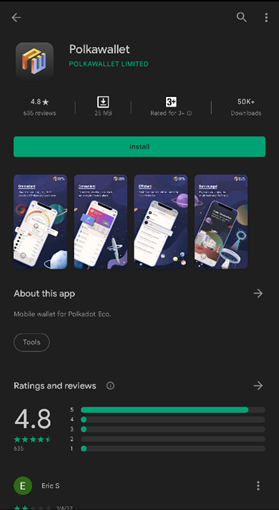
Step 3: Select “Create account” to create a new wallet account.
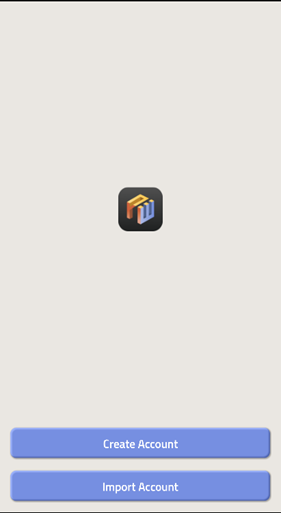
Step 4: Above is the user's wallet address, below are 12 words of mnemonic security, requiring storage in the correct order. At this step, users should manually save these words in a secure place (write by hand or save any note) and NEVER give this phrase to anyone because this is the code that directly unlocks their wallet. user.
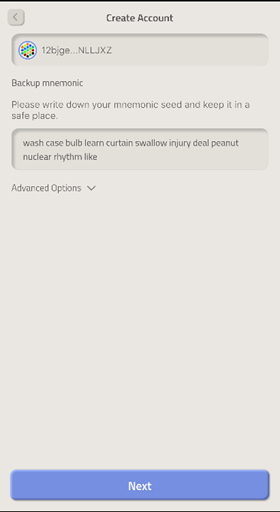
In the Advanced section, users can change other encryption algorithms for their wallets. In the framework of the article, TraderH4 will guide according to the application's default algorithm.

Step 5: In this step, the application is helping users to re-verify the order and content of the 12 words mnemonic that they have saved. They can click select each word in the correct order (from 1 to 12), then click “Next” to continue.
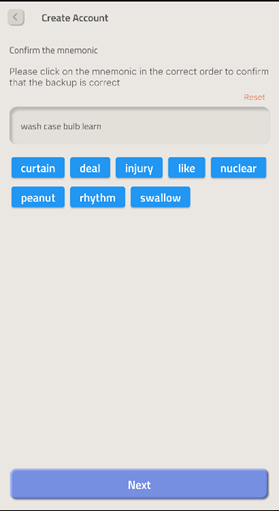
Step 6: Name the account, in this example TraderH4. Note, this is a name for traders to manage individual accounts and this name can be used for trading. Please choose any name that is not duplicated to easily manage wallet accounts, then click “Next” to continue.
If the user's device has biometric security features (fingerprint, facial recognition and retina scan), after clicking “Next” the application will confirm with the current security feature that they using. If you only want to use the password, uncheck the box “Enable Fingerprint/FaceID”.

Step 7: Congratulations! This is the main interface of the application. The user has successfully created his first Polkawallet wallet account and can start using its functions!
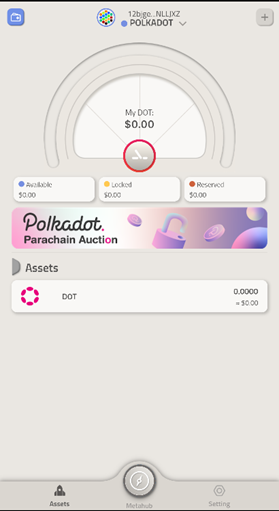
To fund a Polkawallet wallet account at the moment, traders follow the steps below.
Step 1: In the main interface of the application, select the currency you want to top up your account from the list of supported networks and platforms, by clicking on the wallet icon in the left corner of the application.
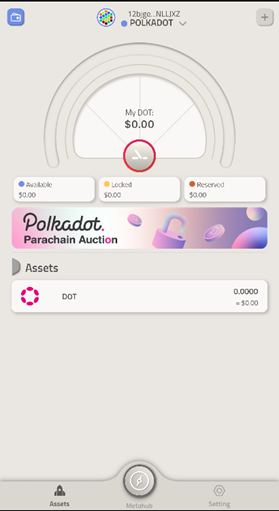
Step 2: By default the application is in Polkadot. The newly created user wallet will be supported on 8 different platforms and ecosystems: Polkadot, Kusama, Acala, Karura, Statemine, Bifrost, ChainX and Edgeware.

Step 3: TraderH4 will choose Karura as an example. Please select Karura from the left column.
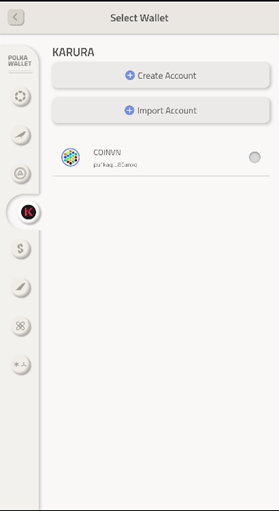
Step 4: Continue to click on the account (here TraderH4) on the right to activate the account on the network.
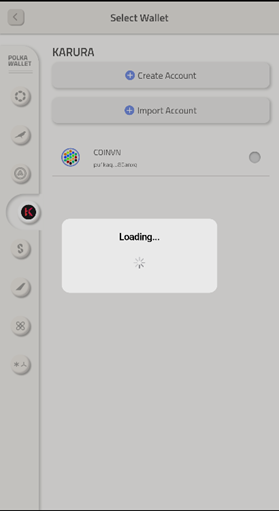
Step 5: In the main interface of the application, select the currency you want to top up your account from the displayed list. Here, TraderH4 will choose KAR (Karura's native token).
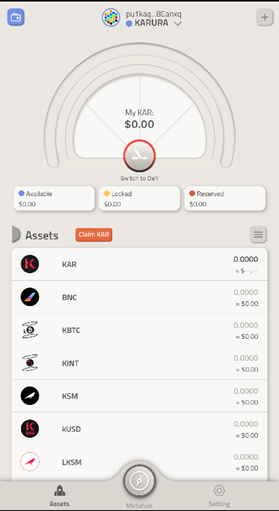
Step 6: At this interface, there will be information about:
Please click “Receive” to get information to receive money into your account.

Users can choose between two ways to fund their account:
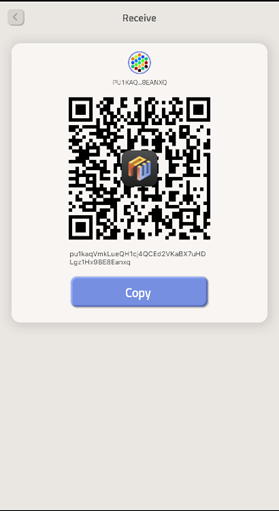
Like other cryptocurrency storage wallets on the market, to withdraw money from the wallet, traders need to transfer funds to the exchange account and make withdrawals or trades from there.
To transfer money to another address, traders follow these instructions:
Step 1: TraderH4 will still use the example of Karura's KAR. To transfer funds, the trader presses the “Send” button.
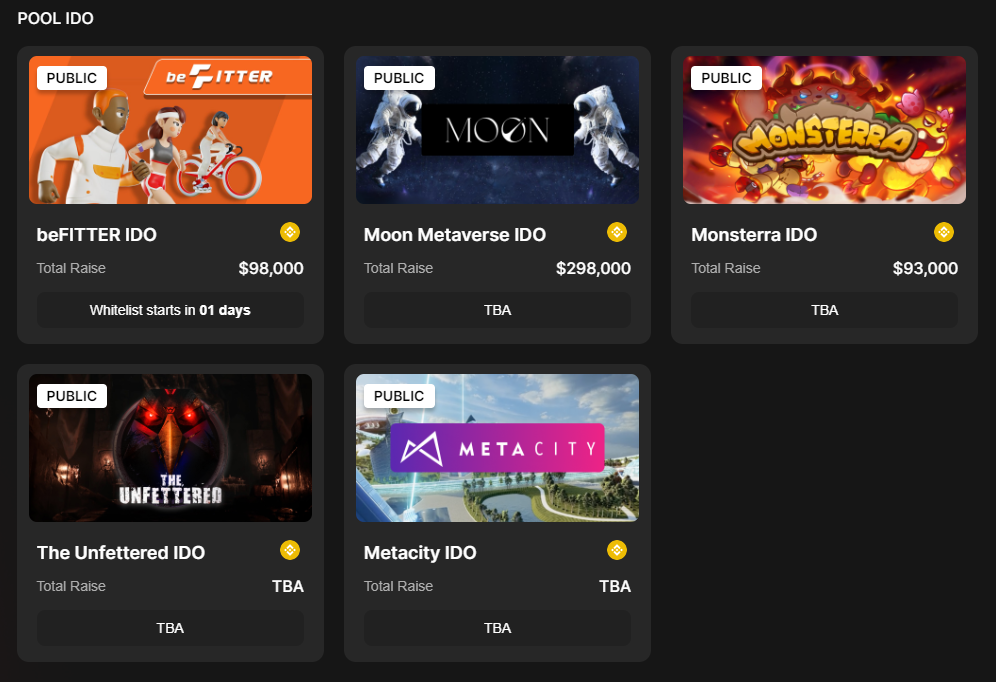
Step 2: Users can paste the recipient's wallet address into the "To Address" box, then enter the number of tokens in the box below. The application displays information such as:
Next, click “Make Transfer” and follow the authentication steps.

If you have difficulty with manual operations, users can click the icon in the right corner to:
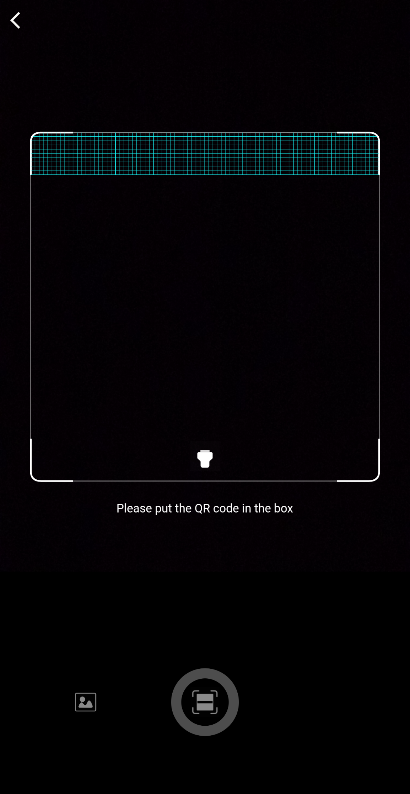
Polkawallet wallet has built-in staking function for users. Currently supporting ecosystems and parachains are Polkadot, Kusama, ChainX and Edgeware. To stake in the wallet, investors only need to do the following:
Step 1: After the user chooses one of the 4 networks that support staking, in the main interface, click “MetaHub” in the menu bar below.
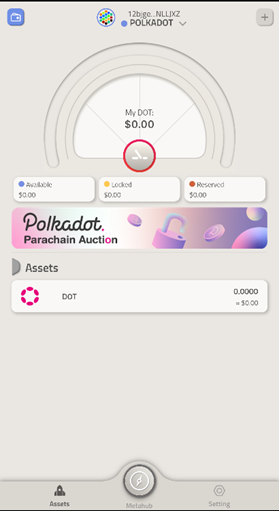
Step 2: At this interface, users can choose between Staking or Governance to use the staking feature or participate in the respective governance of the Polkadot network. Click on the “Staking” line to continue
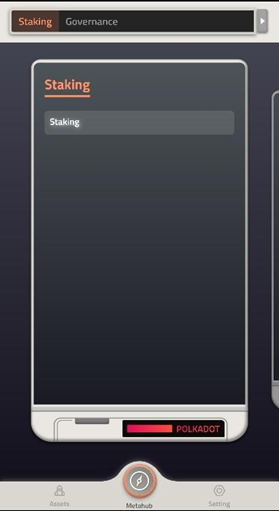
Step 3: At this "Account Actions" interface, the system will display the following parameters:
Investors please click “Bond Funds” to start staking.
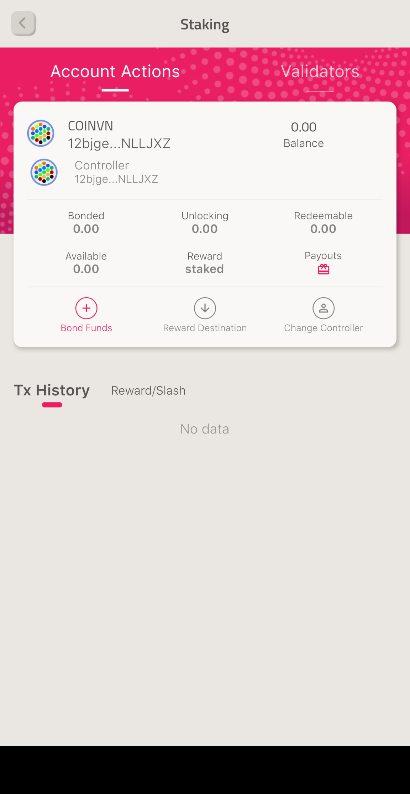
Step 4: At this interface, check your account information and enter the amount you want to stake.
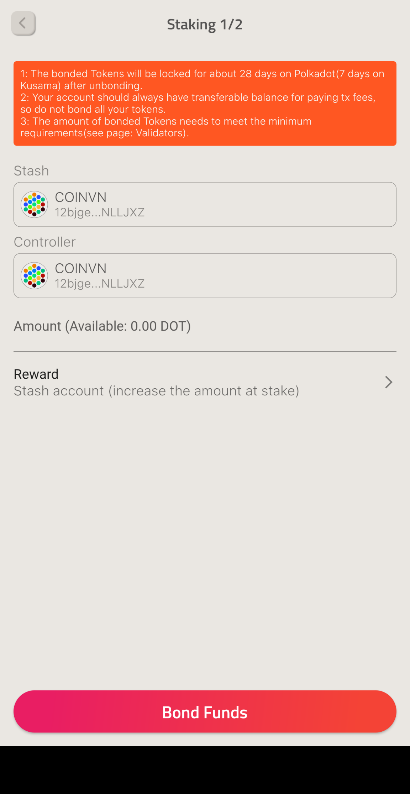
Step 5: Investors click on “Reward” to set up rewards from staking interest:
If you are satisfied with your choices, please click “Bond Funds” and complete the staking through the steps of selecting the validation buttons and confirming the staking.
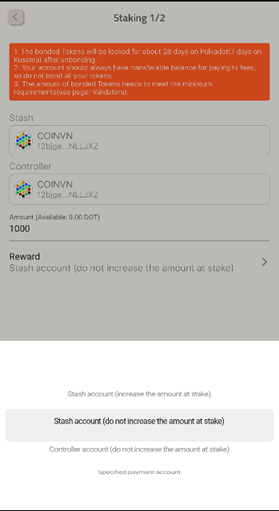
The Polkawallet project provides a one-stop service for cross-chain asset management, convenient administration and staking, and provides private keys owned by users themselves. As the entryway to the Polkadot network, Polkawallet wallet provides users with visual data and shows state changes to ensure the user's right to know and join the network, in order to provide users with a consistent experience. more convenient and convenient.
For more details about the Polkawallet wallet, visit the project's social media pages:
Ngoài PancakeSwap, hệ sinh thái BNB Chain còn có một AMM khác có TVL đạt 150 triệu USD chỉ sau hai tháng ra mắt, dự án này được gọi là Thena.
Blockade Games provides a platform that allows developers to create blockchain games. In addition, Blockade Games also creates many interesting free games.
UNQ Club is a project that provides a blockchain platform that allows investors to collect and manage existing NFT assets.
BENQI is one of the important pieces of the Avalanche ecosystem. Join TraderH4 to find out what BENQI (QI) is as well as detailed information about the QI token.
In addition to a cryptocurrency storage wallet, SafePal is also known to many investors for its SFP tokens and airdrop events with attractive rewards.
The fever from Akita Inu in the Crypto market in the past time has created a great buzz along with the rapid development of the "dog house token".
What is IoTeX? This is a blockchain built and developed in conjunction with the Internet of Things (IoT). Join TraderH4 to learn this article.
What is OKB? OKB is an exchange coin of OKX and the OKX Chain blockchain. Let's learn about OKX and OKB exchanges with TraderH4 in this article.
DROPP GG brings an innovative and novel idea to provide an NFT mint platform based on geographies outside of the real world.
CronaSwap is a DEX built on Cronos Chain, which has a similar model to Uniswap.
